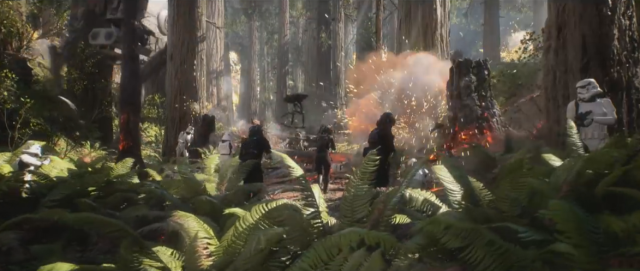Interaction Density in video games.
A look into the interactivity levels in games and how they define the type of game, the ease of access and the required commitment to actually be played.

Unrelated to dynamic density, a sociological term that will come up upon utilizing a search engine for above term, interaction density is a term I coined to signify the amount of possible interactions and their complexity within a video game.
To begin with a demonstrable example, I will discuss the game No Man's Sky.

Seen above, the game was released in 2016 after much media hype and appearances of the lead designer, Sean Murray, on late night shows to give a quick demonstration of the piece of entertainment, justifiably considered groundbreaking due to it's ability to generate an incredibly large number of locations from a seed algorithm within a procedural universe. No Man's Sky is, in essence, a pocket version of the universe, with so many planets to go to, nobody could ever visit them all within their lifespan, even if completely dedicated and attached to a catheter and a nutrient drip.
The issue with the game at the time of release was, and this is according to user feedback, that even though the game is literally "bigger" than any other game and players could travel vast distances, the amount of stuff to do was rather limited.
The player would initially be placed on a planet with very little resources and a crashed spacecraft to repair. The majority of interaction would hence come from resource gathering and adapting the player character to the potentially hostile environment by researching new types of equipment and improving existing material, to the point of being able to relocate to a new planet, repeat the process while discovering new lifeforms and alien civilizations in the shape of space fleets and derelict ruins on some planets, while ultimately trying to reach the center of the universe to uncover a mystery.
If that doesn't sound boring to the reader, the majority of the playerbase did find it very much so. In fact, the reviews for the game after a successful preorder and marketing campaign were mostly negative, with many of the users stating that for a virtually infinite gameverse there was very little to actually do.
Hello Games, developer of No Man's Sky, has taken the player feedback to heart and through several patches added many layers of interactivity. From base building, the creation of space freighters and vehicle types, to story additions and other forms of interactions. Lately, the game has been able to turn around it's reviews somewhat, a positive sign for a temporarily troubling development, even though the financial side seemed secure, as the company is relatively small with around a dozen full time employees and a million copies of the game sold on Steam alone, according to Steamspy.
Another unexpected development was the growth of communities within the game, that went beyond the ininital scope of the developers and added variety through the utilization of layers of web technology and the game inherent systems.
Going full swing back to the title of this blog, interaction density is an important factor when it comes to player engagement, but it isn't a general rule per se, as in "more stuff always better", player expectations have to be met or the player will disengage with the game or layer her own interactions of top of the plain game experience, where the latter is obviously the preferred option for the developer and even though this can provide some valuable feedback for future game updates it should not be the main reason for the player to keep engaging with the game.
Some games, like the idle clicker Adventure Capitalist, shown below,

have an incredibly low interaction density and complexity.
The above picture is close to a complete representation of the game visuals, the game is technically a spreadsheet management simulation, the only real diversity comes from different business environments, like the moon, but the meat of the interaction is in changing numbers and literally waiting for certain amounts to be reached for new purchases, hence the categorization.
Adventure Capitalist is also a video game, just like No Man's Sky and nobody would ever consider criticizing the game for what it is, unless approached blind and with misinformed expectations.
On the other side of the spectrum are games like the Geometry Wars series, seen below,
 which inherently target sensory overload for heightened difficulty.
which inherently target sensory overload for heightened difficulty.
The player will be bombarded with stimuli and types of information, in this case color coded, to a point where processing initially becomes impossible or very difficult due to the missing element of acquired pattern recognition while required to constantly move and aim at targets to succeed.
Again, nobody would write a negative review about this game because of "too much stuff going on", unless they are uninformed or have been mislead to expect a different game.
Triple A blockbuster franchises like Call of Duty or Battlefront, shown below,  generally aim for a high action density with a moderate to medium high interaction density, the result is a very cinematic experience with lots of stuff happening on screen, while the player still has the ability to navigate and interact with the environment without experiencing visual overload.
generally aim for a high action density with a moderate to medium high interaction density, the result is a very cinematic experience with lots of stuff happening on screen, while the player still has the ability to navigate and interact with the environment without experiencing visual overload.
Here, the goal is to allow any player familiar with the general control scheme of such games to jump into the action and have fun within minutes, without requiring a learning process beyond the movement and object interactions, which are both likened to similar popular titles and streamlined for accessibility.
For the emerging field of virtual reality titles, hitting the right balance is even more important, as the immersion is brought to a whole new level through 3 dimensional display of scenarios and environments.
People are known to have over reacted by falling while playing a vr rollercoaster game without using a chair to stabilize their position. The resulting inertia was too much to process and their bodies were unable to compensate the stimuli their brain was receiving from their eyes, which told them they were moving in various directions at high speed.
To summarize: I think that interaction density is an important element to consider when creating a video game. Of course, specific genres will always have a higher interaction density than others, but expected engagement levels have to be considered when creating a shooter, just like when creating a competitive real time strategy game where terms such as Actions Per Minute are used, which differ greatly from the numerally similar clicking density of idle clickers, in that they require a lot more coordination and mental planning while the actions take place.
When a specific type of game is presented in a trailer or other marketing material, the player should experience an interaction density that matches what she expects based on experience or in the case of a lack of experience matches the visuals that are presented in the trailer, unless stated to be CG for a movie like experience.
New genres should indicate what type of interaction and interaction density the player can expect, to attract the kind of user who will enjoy the interactions and ideally give positive feedback since her preferences were matched.
Read more about:
BlogsAbout the Author(s)
You May Also Like













